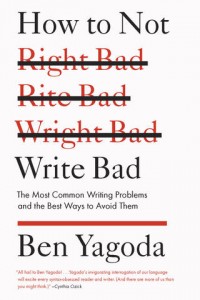Finding your article’s focus with Roy Peter Clark
Identifying their focus is one of the biggest challenges for many of my blogging class students. I try to help them by asking “What problem do you solve for your readers?” I found additional helpful techniques in the “I don’t know what my story is really about” chapter of Roy Peter Clark’s Help! for Writers: 210 Solutions to the Problems Every Writer Faces. I discuss some of them in this post.
1. “Write a six-word theme statement.”
If your idea requires more than six words, it may be too big. A six-word theme may still be too broad. For example, consider “More women than men reach ninety,” one of Clark’s sample themes. However, at least it provides a starting point.
My theme for this blog post is “Tips to focus your articles.”
There are two ways to use your theme. First, as inspiration for your article. Write to explain your theme.
Second, use it to narrow your article. Pare away anything that doesn’t relate to your theme.
2. “Cut the elements least supportive of your focus.”
Use your best material and lose the rest. As Clark says,
Not all evidence is equal. If you can identify the weakest evidence, what is left—your strongest stuff—can support a sharp focus.
The saying “less is more” often applies to articles, blog posts, and more. By deleting flabby evidence, you sharpen your main focus.
Clark lists eight characteristics that make evidence weak. Two of them often apply to financial pieces.
- “It will appear in the story only because of your interest in it.”
- “It is impossible to write it clearly and quickly for a general audience.”
3. Use the funnel
Putting your ideas through a metaphorical funnel may also help. As Clark suggests on his book’s back cover:
See your work in the form of a funnel. You pour everything in at the top, but as the funnel narrows, you must become more selective, reaching a point where you can leave things out with confidence.
Alternatively, think of yourself as a sculptor with a block of marble. Only by cutting away stone can you reveal your masterpiece.
How do YOU find your focus?
There are many ways to identify the focus of an article, blog post, or other written communication. What’s your favorite technique?

